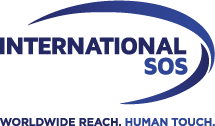2020: WHO’s International Year of the Nurse
Natali Steyn, Clinical Governance Nurse Assistant, South Africa
Clinical Governance (CG) is best defined as “the framework through which an organisation is accountable for continuously improving the quality of their services and safeguarding high standards of care by creating an environment in which excellence in health care will flourish.” I am proud to be part of the team that ensures that the appropriate level of care is maintained, making a measurable difference in the well-being of our patients and remote site healthcare providers.
The CG process starts with a thorough induction and orientation of healthcare providers, but requires ongoing communication, feedback, teamwork and continued medical education (CME). When remote site healthcare providers work, they enter patient interactions and management into an electronic healthcare record (EHR) system. Anonymised patient electronic medical records are reviewed daily by the CG team to assess the quality of record keeping and medical management. Electronic peer-review, feedback and support is given to the healthcare provider within 24-48 hours of the patients’ visits.

An analytics system is used to identify patterns and trends in our region and identify cases that may require further follow-up or intervention. This system of continuous peer review and feedback, facilitated by real time analytics, has demonstrated significant and sustained improvement in patient care and staff satisfaction. In SubSaharan Africa, one of the biggest challenges is the management of malaria patients. Through the daily application of the system outlined we have observed significantly improved case management and staff engagement. Other examples of measurable improvements include the triage and care of emergency cases, antibiotic stewardship and the management of injury on duty cases.
I am not on the front line providing patient care, but it is very fulfilling to provide input on a vast number of medical cases and play a key role in supporting remote healthcare providers. We believe that through positive reinforcement and daily feedback we can change behaviour and practices and improve patient care. In the words of Atul Gawande “Better is possible. It does not take genius. It takes diligence. It takes moral clarity. It takes ingenuity. And above all, it takes a willingness to try.” This could not be truer than during the current COVID-19 pandemic. The CG system has enabled us to not only provide medical advice and guidance, but also to provide psychological support for patients and healthcare providers.
Working in a remote location with limited resources and not being able to see loved ones for extended periods has had a significant psychological impact on our staff and patients. Daily communication and feedback have proved to be of vital importance in ensuring staff remain updated, supported and motivated. I believe that the future of similar CG programs and nurses’ involvement is bright. eHealth tools such as EHR, telemedicine platforms and analytics tools have played a crucial role in supporting the continuity of care and promoting staff morale. The COVID-19 pandemic has acted as a catalyst, necessitating remote support of our colleagues, and ensuring the wellbeing of our patients.
Download our 2020 Retrospective: Year of the Nurse & Midwife publication, which marks the celebration of nurses and midwives as they share their thoughts and experiences amidst the COVID-19 pandemic.



